Animal Therapy Explained: 4 Best Courses & Certifications
 The relationship between humans and animals is dynamic and varied.
The relationship between humans and animals is dynamic and varied.
Many people consider their pets to be family members, and research shows that the human–animal bond is a therapeutically powerful relationship.
There are several medical and psychological benefits to interacting with animals, regardless of whether it is our own pet or another animal (Compitus, 2019).
This article describes the benefits of using animal-assisted therapy (AAT) in your psychotherapy practice and provides basic information on how to get started in AAT.
Before you continue, we thought you might like to download our three Positive Psychology Exercises for free. These science-based exercises explore fundamental aspects of positive psychology, including strengths, values, and self-compassion, and will give you the tools to enhance the wellbeing of your clients, students, or employees.
This Article Contains:
- What Is Animal-Assisted Therapy?
- How Does It Work? Psychology Behind Animal Therapy
- 15 Benefits of Animal Therapy According to Research
- Can It Help With Depression, Anxiety, Autism, & PTSD?
- Training in Animal Therapy: How to Develop Your Career
- 10 Best Certifications and Books to Consider
- A Take-Home Message
- References
What Is Animal-Assisted Therapy?
Animal-assisted therapy (AAT) is the umbrella term for any formal therapeutic activity that involves animals working in tandem with a licensed professional.
Any type of therapist may conduct AAT, including occupational or physical therapists, although when we refer to AAT, we are typically speaking about animal-assisted psychotherapy.
Unlike animal-assisted activities or animal-assisted interventions, animal-assisted therapy must be goal directed, conducted by a licensed professional, and involve a formal treatment plan (Compitus, 2021b).
Therapists should keep progress notes and periodically evaluate the treatment plan.
Animal-assisted education (such as having children practice reading to dogs) also has therapeutic benefits and often involves formal treatment plans. However, as it is an educational rather than therapeutic activity, it does not have to be conducted by a licensed health professional (Fine, 2019a).
History of animal therapy
Animal-assisted therapy has been around for a fair time, and some of the first animal-assisted therapists include Dr. Sigmund Freud, nurse Florence Nightingale, and the father of modern animal-assisted therapy, Dr. Boris Levinson (Compitus, 2021a; Levinson & Mallon, 1997).
Philosopher John Locke first wrote about the therapeutic effects of spending time with animals in the 1600s, but it is still a burgeoning field (Fine, 2019a).
How Does It Work? Psychology Behind Animal Therapy

Some consider a biopsychosocial framework for AAT, since it affects clients on biological, psychological, and social/environmental levels (Blazina, Boyraz, & Shen-Miller, 2011).
An extensive amount of research shows the medical benefits of spending time with animals.
The Centers for Disease Control and Prevention list some benefits as:
- Lowered blood pressure
- Lower cholesterol
- More likely to exercise
- Lowered risk of diabetes
- Lowered cortisol (Fine, 2019a)
In fact, oxytocin (the “love hormone”) plays a large part in our connection to animals.
Oxytocin is the hormone that is released to help parents bond with their children and when people fall in love. It helps us feel good and allows us to feel emotionally secure, content, and happy. Oxytocin also increases in humans when we spend time with animals; we naturally feel better when they are around (Compitus, 2021a).
This suggests that AAT will work for all clients but may be especially helpful for those who have disorganized attachment styles, since they often have lower levels of oxytocin in their systems (Compitus, 2021a). The increase in oxytocin that happens during AAT suggests that there is a biological justification for AAT as a treatment model (Compitus, 2021b).
Socially, there are even more reasons for clients to engage in AAT. Our relationships with animals also allow us to connect with other humans.
AAT builds on relationships and strengthens the therapeutic alliance, which allows the client to create a reparative relationship (VanFleet & Faa-Thompson, 2017).
The presence of a therapy animal may suggest to clients that the therapist is trustworthy by association (i.e., If the therapist can take good care of this animal, then they will take good care of me.).
Therapy animals can allow clients to feel emotionally and physically safe, depending on the type of therapy animal. Clients may feel more inclined to open up to therapists and discuss difficult subjects (Chandler, 2017).
The presence of a therapy animal itself may be a behavioral reward for some clients and encourage them to attend sessions regularly (Compitus, 2021b).
Adolescents, in particular, may see a visit to the animal as a socially acceptable reason to attend therapy. In addition, some scientists theorize that spending time with animals may be vital to the development of a sense of empathy in growing children since they can learn, through their interactions with animals, to understand how others may feel (Arluke, Levin, Luke, & Ascione, 1999).
Although we are unsure exactly how or why AAT works at a psychological level, currently clinicians often use attachment theory, object-relations theory, or a self psychology model as a basis to understand AAT.
Similar to all three theories is the idea that animals provide us a sense of unconditional love and never judge us for our actions (Compitus, 2019). This provides a sense of emotional security and attachment that is rarely found in interpersonal human relationships.
If we look at AAT through an attachment theory lens, we see that our connection to a therapy animal may provide a safe and reparative relational experience in which we can explore our imperfect human relationships (Parish-Plass, 2013). The animal, in this sense, works as an anchor to keep us safe at harbor while exploring stormy seas.
In object-relations theory, we think of the psyche in relation to others in the childhood environment and of how those early relationships affect the client today. It postulates that the need for attachment is the foundational process of the formation of the self and our personality.
There are key terms in object-relations theory that are relevant in the understanding of AAT, such as the “holding environment,” which is the safe emotional and physical space (Winnicott, 1989).
Some theorize that the therapy animal works as a “primary love object,” which means that the relationship with the animal serves as a prototype for future interpersonal relationships with humans (Compitus, 2021b).
Others suggest that the animal therapist functions more as a “transitional object,” which indicates that the relationship with the animal reflects the safe and loving relationship that the person had with early childhood caretakers (Compitus, 2019).
Self psychologists look at the work of the therapy animal slightly differently, stating that the therapy animal functions as a self-object, which helps the human client integrate different aspects of the self (Brown, 2004).
Equine therapy and dog therapy explained
Although dogs are the species of animal most often working with us in therapy, there is a great deal of reported success with equine (horse) therapy.
The Professional Association of Therapeutic Horsemanship is a well-established international certifying agency for equine therapy. The International Institute of Animal-Assisted Play Therapy also has a very strong equine therapy certification program.
Although similar to equine therapy, hippotherapy is the accepted professional term for any type of occupational, physical, or speech therapy where clinical professionals integrate evidence-based practices with equine movements as a therapeutic tool (hippo is the ancient Greek word for “horse” and therapy means “treatment”).
These practices are designed to engage the sensory, cognitive, and neuromotor systems and are often used with clients with neurological or motor conditions, such as autism or developmental disorders.
However, in equine therapy, the process of integrating horses into psychotherapy can be very successful for people of all conditions and populations. Horses are often integrated into the therapeutic process because of their innate and uncanny ability to attune themselves to the emotions and body language of humans.
Although there is potentially a therapeutic benefit to interactions with any species, only dogs compare to horses in their close and symbiotic relationship with humans.
Animal therapy in schools, hospitals, & prisons
Animal-assisted interaction is the parent term for any interaction that a human may have with an animal in a way that enhances the wellbeing of both.
Underneath this parent category, we find animal-assisted activities, animal-assisted education, and animal-assisted therapy.
As stated earlier, animal-assisted psychotherapy must be conducted by a licensed mental health professional, must be goal directed and have a formal treatment plan, and must include objective and periodic evaluations of the course of treatment. However, not all animal-assisted interactions are formal psychotherapy models; although there may be a psychologically therapeutic benefit, it is not necessarily always the primary goal.
Animal-assisted activities (AAA) are designed to enhance the wellbeing of humans but do not have to be conducted by a mental health professional. We most often see AAA in hospitals, when an animal comes for a friendly visit with patients.
When animals are around, not only do people feel better, but they recover faster from medical procedures, such as surgery (UCLA Health, n.d.). While the benefit is emotional and physiological, since it is not formal psychotherapy, it should be considered an animal-assisted activity rather than animal-assisted therapy.
Animal-assisted activities are also commonly found in the prison system, where several AAA programs provide a therapeutic benefit to incarcerated individuals. The benefits of AAA in prisons include teaching practical skills to incarcerated individuals, enhancing empathy and emotional regulation, and increasing their sense of self-efficacy, since they are learning a new skill and helping others (Compitus, 2021b).
Some examples of AAA in prisons include the Wallkill Correctional Facility in New York, where people in prison help care for retired thoroughbred horses, and the Puppies Behind Bars program, where incarcerated individuals raise and train puppies to become service dogs for people with disabilities.
In this sense, the animals may also function as “vehicles of redemption,” since the incarcerated individual may feel that their work with the animal helps them contribute positively to society and gives them cause to feel pride in their work.
Another place that we see animal-assisted interventions is in schools, where we may find animal-assisted education (AAE). A typical AAE program may involve children reading to a therapy animal, where the animal is perceived as nonjudgmental and providing unconditional love.
A child who is struggling to read may feel more comfortable reading aloud to a therapy animal than in front of other children or adults. AAE programs appear to be quite successful, and some studies even show that university students score higher on standardized tests when a therapy animal is in the room (Compitus, 2021b).
15 Benefits of Animal Therapy According to Research
- Improved sense of security/emotional safety
- Stronger therapeutic alliance
- Teaches empathy and encourages empathic responses
- May increase sense of self-efficacy
- Reduced symptoms of depression
- Reduced symptoms of anxiety
- Reduced cortisol levels
- Increased levels of oxytocin and serotonin
- Encourages sense of responsibility
- Reduces loneliness
- Provides comfort
- A model for desirable behavior
- Increase in mental capacity/mental stimulation
- A behavioral reward/enjoyment
- Emotional catalyst in therapy/breaks through resistance (UCLA Health, n.d.; Compitus, 2021b; Arluke et al., 1999)
Can It Help With Depression, Anxiety, Autism, & PTSD?

AAT may also help teach social skills to those diagnosed with a neurodiverse condition, such as autism spectrum disorder (VanFleet, 2020).
When working with veterans with PTSD, the therapy animal may be a catalyst for change or a motivational factor, since many veterans are more motivated to regulate their emotions when they have an external reason to do so, such as a furry buddy who needs their help (Bergen-Cico et al., 2018).
Animals help provide a safe space for interaction, whether it is learning social skills for those with autism or emotional regulation for those struggling with PTSD or anxiety.
In addition, the release of endorphins such as oxytocin may increase the client’s sense of wellbeing, which in turn, could allow them to open up to the therapeutic process.
The release of endorphins may ease the symptoms of depression and allow the client to feel more calm and secure. Since physical touch is rarely a part of psychotherapy, a therapy animal in the room may allow the client a safe, non-threatening way to engage in physical touch (Chandler, 2017).
This form of physical contact may be especially beneficial for survivors of abuse or sexual assault who may feel threatened by the touch of another human being. It can allow clients to reintegrate these feelings – the need to be touched with the fear of being touched – in a safe and healthy way.
The tactile stimulation involved in petting an animal reflects a child’s need for a transitional object, such as a baby blanket, that provides a tactile sense of security (Winnicott, 1953).
Finally, studies show that simply holding a purring cat lowers cortisol levels, allowing clients to come out of a heightened state of awareness (activated limbic system) and into a more grounded and centered state of mind (Compitus, 2021b).
Animal assisted therapy – Phoenix Children’s
Training in Animal Therapy: How to Develop Your Career
There are key ideas that clinicians must keep in mind when working in AAT.
The first is that the welfare of the therapy animal should always be of primary concern (Chandler, 2017; Compitus, 2019; Fine, 2019b; VanFleet & Faa-Thompson, 2017).
If the animal is not well cared for, this will reflect badly in the therapy sessions and raise the potential for the human or the animal to be harmed. Although not required by law, it is strongly suggested that therapists become registered with a certifying therapy animal agency.
These agencies generally provide training in AAT and understanding animal body language, as well as best practices in therapy animal welfare. They also often provide special liability insurance and may help you connect with programs that are looking to work with therapy animals.
Of course, when thinking of animal welfare, we must remember how we speak about our therapy animals (Compitus, 2020). Animal-assisted therapists will never say that they “use” an animal in therapy because the therapy animal is always considered a co-facilitator that works alongside the human.
The American Counseling Association’s Animal-Assisted Therapy in Counseling Competencies is vital to learn if you plan to work in this field (Stewart, Chang, Parker, & Grubbs, 2016).
AAT is not a standalone treatment model. It is an adaptive adjunctive modality that can be integrated into most existing models (Chandler, 2017).
AAT is most often integrated into Psychodynamic Psychotherapy, Cognitive-Behavioral Therapy, Relational Therapies, and Gestalt Therapy, among others.
The set goals and objectives for each session will differ depending on the primary type of therapy being used. For example, a therapist using Dialectical Behavior Therapy with AAT may instruct the client to teach the therapy animal a skill, such as “settling.”
Additionally, the clinician may then discuss any spontaneous reflections that the client brings up, such as “The dog moves away from me when I sound angry but moves closer when I speak kindly.” The therapist may also point out the therapy animal’s behavior as a model for the client’s behavior. For example, “Fido is always mindful. Let’s practice mindfulness, just like Fido.”
There are such a variety of ways that AAT can be implemented that clinicians may feel a bit confused. I strongly suggest that clinicians self-educate by reading the books listed below and keep up to date on new and emerging journal articles in AAT. I also suggest that clinicians take continuing education classes in order to learn more about this field. Some of these classes are listed below.
10 Best Certifications and Books to Consider
While there are not currently many certification courses or books about AAT, here are a few of the best that we recommend.
Books
1. Handbook on Animal-Assisted Therapy: Foundations and Guidelines for Animal-Assisted Interventions – Aubrey H. Fine
This is the go-to guide for anyone interested in learning about AAT. It is very comprehensive with sections on history, how to implement AAT, and the use of AAT with different populations and disorders.
It is a useful resource, especially for therapists who are considering including AAT in their practice, as it highlights the many benefits of AAT.
Find the book on Amazon.
2. The Human–Animal Bond in Clinical Social Work Practice – Katherine Compitus
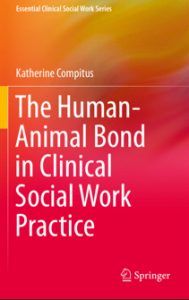
It also explains in detail the other areas for clinical work related to the human–animal bond, such as grief counseling for pet loss and working with special populations such as those experiencing homelessness and domestic violence survivors.
Find the book on Springer.
3. Animal-Assisted Therapy in Counseling – Cynthia K. Chandler
AAT can be confusing, and clinicians may not know how to start.
This book by Dr. Chandler explains human–animal relational theory and how different treatment models can be integrated with AAT.
The book includes examples of animal-assisted interventions using different types of animals for different scenarios. Any counselor who wants to grow their knowledge and ultimately incorporate AAT into their practice will find this book valuable.
Find the book on Amazon.
4. The Psychology of the Human–Animal Bond – Christopher Blazina, Guler Boyraz, and David Shen-Miller
Interested in the psychology behind AAT?
This book is a must for anyone who wants to know more about the process behind AAT and the human–animal bond.
The book is a good resource for interested readers and new and established clinicians looking to improve and better understand the human–animal bond.
It goes into detail concerning the psychology behind the human–animal bond by highlighting different topics such as animal ethics regarding world views and cultural dynamics.
Find the book on Amazon.
5. Animal-Assisted Psychotherapy: Theories, Issues, and Practice – Nancy Parish-Plass
This is another outstanding book that describes the ways to implement AAT in direct psychotherapy practice. This important text showcases the theory and practice of animal-assisted psychotherapy used in Israel.
With evidence-based psychotherapeutic approaches, the book also brings forth the many challenges that clinicians face with AAT.
Find the book on Amazon.
6. Animal Assisted Play Therapy – Risë VanFleet and Tracie Faa-Thompson
This is a necessary book for anyone interested in relational work and AAT.
Play therapy can be highly successful for clients of all ages when integrated with AAT, and this book explains it all from start to finish.
Along with the techniques, the authors take it a step further by including case examples and demonstrations on how these techniques can be used for different animals.
Find the book on Amazon.
Certifications and courses
1. Pet Partners
Pet Partners, formally known as the Delta Society, is one of the oldest therapy animal certification organizations in the United States.
The certification course involves an understanding of both human and animal body language and best practices in AAT.
Certification allows practitioners to work in AAT through Pet Partners or on their own.
The final course requirement is an in-person evaluation of the therapy animal and handler. Those who are already certified may further qualify as an animal-assisted crisis response team.
2. Therapy Dogs International
Therapy Dogs International is also a very well-established therapy animal organization with locations worldwide.
Certification includes best practices in animal welfare and handling.
3. The Good Dog Foundation
Located in New York City, The Good Dog Foundation not only certifies therapy animal teams, but also connects them with over 200 agencies (hospitals, schools, etc.) in the New York metropolitan area that are integrating animal-assisted activities into their daily practices.
4. International Institute of Animal Assisted Play Therapy (IIAPT)
Located in the United States and United Kingdom, the IIAPT provides training, supervision, standards, and credentialing in Animal Assisted Play Therapy. It is a highly comprehensive and recommended program.
A Take-Home Message
Many people feel naturally drawn to animals; they provide us with a connection to the natural world that we lose sight of in our day-to-day activities.
Whether it is connecting with our own pet, visiting animals in the zoo, or working with a therapy animal team, spending time with animals provides several health benefits.
Animal-assisted therapy is a powerful adjunctive treatment model that can be adapted and incorporated with most existing modalities. The inclusion of AAT in a treatment plan is involved but not complicated and may help clients reach their therapeutic goals more quickly.
We hope you enjoyed reading this article. Don’t forget to download our three Positive Psychology Exercises for free.
- Arluke, A., Levin, J., Luke, C., & Ascione, F. (1999). The relationship of animal abuse to violence and other forms of antisocial behavior. Journal of Interpersonal Violence, 14(9), 963–975
- Bergen-Cico, D., Smith, Y., Wolford, K., Gooley, C., Hannon, K., Woodruff, R., … Gump, B. (2018). Dog ownership and training reduces post-traumatic stress symptoms and increases self-compassion among veterans: Results of a longitudinal control study. The Journal of Alternative and Complementary Medicine, 24(12), 1166–1175.
- Blazina, C., Boyraz, G., & Shen-Miller, D. S. (2011). The psychology of the human–animal bond. Springer.
- Brown, S. E. (2004). The human–animal bond and self psychology: Toward a new understanding. Society & Animals, 12(1), 67–86.
- Chandler, C. K. (2017). Animal-assisted therapy in counseling. Routledge.
- Compitus, K. (2019). Traumatic pet loss and the integration of attachment-based animal assisted therapy. Journal of Psychotherapy Integration, 29(2), 119–131.
- Compitus, K. (2020, August 15). We should watch our words when speaking about animals. Psychology Today. Retrieved from https://www.psychologytoday.com/us/blog/zooeyia/202008/we-should-watch-our-words-when-speaking-about-animals#
- Compitus, K. (2021a). The process of integrating animal-assisted therapy into clinical social work practice. Clinical Social Work Journal, 49(1), 1–9.
- Compitus, K. (2021b). The human–animal bond and clinical social work practice. Springer.
- Fine, A. H. (2019a). Incorporating animal-assisted therapy into psychotherapy: Guidelines and suggestions for therapists. In A. H. Fine (Ed.), Handbook on animal-assisted therapy (5th ed.) (pp. 207–224).
- Fine, A. H. (Ed.). (2019b). Handbook on animal-assisted therapy: Foundations and guidelines for animal-assisted interventions (5th ed.). Academic press.
- Levinson, B. M., & Mallon, G. P. (1997). Pet-oriented child psychotherapy. Charles C. Thomas.
- Parish-Plass, N. (Ed.). (2013). Animal-assisted psychotherapy: Theory, issues, and practice. Purdue University Press.
- Stewart, L. A., Chang, C. Y., Parker, L. K., & Grubbs, N. (2016). Animal-assisted therapy in counseling competencies. American Counseling Association.
- VanFleet, R. (2020). Animal Assisted Play Therapy®. In R. Bédard & L. Hecker (Eds.), A spectrum of solutions for clients with autism: Treatment for adolescents and adults. Routledge.
- VanFleet, R., & Faa-Thompson, T. (2017). Animal Assisted Play Therapy. Professional Resource Press.
- UCLA Health. (n.d.). Animal-assisted therapy research. Retrieved from https://www.uclahealth.org/pac/animal-assisted-therapy
- Winnicott, D. W. (1953). Transitional objects and transitional phenomena: A study of the first not-me possession. The International Journal of Psychoanalysis, 34, 89–97.
- Winnicott, D. W. (1989). Holding and interpretation: Fragment of an analysis (no. 115). Grove Press.
Let us know your thoughts
Read other articles by their category
- Body & Brain (49)
- Coaching & Application (57)
- Compassion (26)
- Counseling (51)
- Emotional Intelligence (24)
- Gratitude (18)
- Grief & Bereavement (21)
- Happiness & SWB (40)
- Meaning & Values (26)
- Meditation (20)
- Mindfulness (45)
- Motivation & Goals (45)
- Optimism & Mindset (34)
- Positive CBT (29)
- Positive Communication (20)
- Positive Education (47)
- Positive Emotions (32)
- Positive Leadership (18)
- Positive Parenting (4)
- Positive Psychology (33)
- Positive Workplace (37)
- Productivity (17)
- Relationships (46)
- Resilience & Coping (36)
- Self Awareness (21)
- Self Esteem (38)
- Strengths & Virtues (32)
- Stress & Burnout Prevention (34)
- Theory & Books (46)
- Therapy Exercises (37)
- Types of Therapy (64)

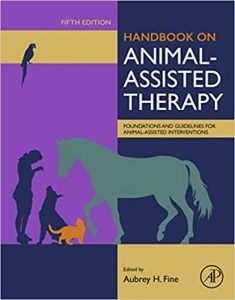
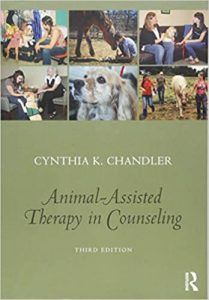
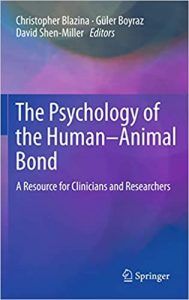
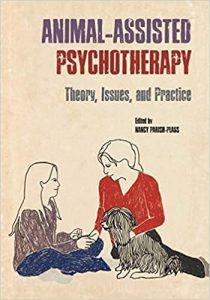
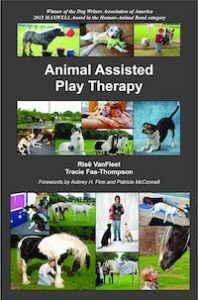





What our readers think
This article offers a plethora of valuable informative, well done Dr. Katherine Compitus! I would love to come New York State for a visit to Surrey Hills Sanctuary.
Can this training be online? I would like to enroll for the training? Please guide on the process
Hi Mary,
Thanks for your question! I am no expert when it comes to proper certification of Animal Therapy online, but there are several resources that you might want to check out, such as this one and this one.
I hope this was helpful.
Kind regards,
-Caroline | Community Manager
I am keen to do a course in AAT,I’m a counsellor and want to help my clients for their mental well-being.